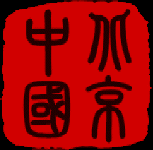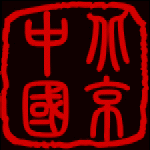 |
Chinese Culture Philosophical Ideas |
 |
 |
Chinese Culture Philosophical Ideas |
 |
Note : this section will be expanded over the coming months.
Other Philosophical IdeasThere are a number of ancient philosophical ideas that link with each other in various ways and permeate chinese culture. Feng ShuiFeng Shui (pronounced 'fung shway') literally 'Wind Water' is the ancient Chinese concern for placement and arrangement of a space to achieve harmony with the environment. For a place to have 'good Feng Shui' is for it to be in harmony with nature, whereas to have 'bad Feng Shui' is to be incongruous with nature. Feng Shui draws together a wide mix of geographical, religious, philosophical, mathematical, aesthetic and astrological ideas. Sometimesintuitive and derivable from common sense and our feeling of what is natural. Underlying the practical guidelines of feng shui is the theory of Qi. The 'Book of Changes' ('I Ching') and 'The Five Elements are also sometimes brought into play. QiNature is generally held to be a discrete organism that breathes qi (a kind of life force or spiritual energy). The details about the metaphysics of what nature is, what Qi is and does, and what breath consists in vary. However, it is not generally understood as physical, but neither is it meant to be metaphorical although it can be thought of that way. The Five ElementsThe Qi energy can be found in various forms identified as Wu Xing (5 Phases) - Wood, Fire, Earth, Metal and Water. These energy phases are so-named because they tend to behave somewhat like the physical entities. The notion of the Five Elements is found in Chinese medicine and Feng Shui. Do not confuse the 5 elements of Chinese Metaphysics with the 5 elements of Greek philosophy (Wind, Water, Earth, Ether and Sky). Yin YangThis is the idea that opposites both contain each other and give rise to each other. These ideas are captured beautifully in the symbolisation of ... Further, that we need to take a holistic view and seek balance between opposites. Any two opposites are defined by reference to each other and in a dynamic relationship. Although the origins probably predate Taoism, the idea is elaborated quite explicitly in the Tao Te Ching, if not by name. Yin : Moon, water, cold, feminine, dark, passive force, ... Yang : Sun, fire, hot, masculine, bright, active force, ... Everything has an opposite, and opposites are relative, not absolute. They are interdependent. There is always a trace of one in the other, like stars in the night sky. There can not be absolute darkness or absolute brightness, coldness or whatever. One can transform into the other. For example, night becomes day becomes night. And if we look from space, we see that night and day actually coexist! There are four possible imbalances: excess Yin, excess Yang, Yin deficiency, and Yang deficiency. They can again be seen as a pair: by excess of Yin there is a Yang deficiency and vice versa. The imbalance is also a relative factor: the excess of Yang 'forces' Yin to be more 'concentrated'. The darker the night, the brighter the stars look. Yin / Yang is an important concept in chinese medicine. Symptoms categorised as yin would be treated by foods that are said to yang. The 'I Ching' ('Book of Changes')The 'I Ching' attempts to elaborate on the nature of the universe. This book is based on 64 diagrams that represent all the different ways to combine six 0s and 1s (yin or yang). For example, 101101. An unbroken line can be used to represent Yang and a broken line Yin. This gives 64 hexagrams that can be used as an oracle. Each hexagram can be analyzed into an upper group of three lines and a lower group of three lines. These are called the upper and lower 'trigrams'. Discussion of the hexagrams involves considering 'young' and 'old' Yin or Yang. 'Old' indicates that the Yin or Yang is about to change to the opposite. The 'I Ching' can be read here (external link). |
Share this page
|
China Travel and Culture Videos Home